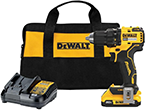Dealing with High Water Pressure
Written by Lee Wyatt (last updated December 19, 2018)
While many home owners say that they want high water pressure, they never really stop to think what it means if they have really high water pressure. Not dealing with high water pressure can lead to all kinds of unintended consequences that can lead to extremely high repair and utility bills. Luckily there are a few steps that you can do to begin dealing with high water pressure.
- Test the pressure. The first step in dealing with high water pressure is to actually figure what your current water pressure is. This can easily be done by placing a water pressure gauge on an exterior water faucet. If you don't have an exterior water faucet, then attach the gauge to an interior one (though you may need to dismantle part of the faucet to attach the gauge). As long as the water pressure is within 40 to 50 pounds per square inch (psi) then it is alright. However, if it is higher than 50 psi you will need to take some action.
- Locate water main. In order to change your current water pressure you will need to locate your water main. If you can, locate the place that your water main enters the house since there is a pressure regulator located there. Once you have located the regulator you can begin making adjustments.
- Adjust the regulator. On the pressure regulator you should find a cap which is covering the screw or bolt which is what is actually used to adjust the pressure. Using either a wrench or a screwdriver (whichever is appropriate for your situation) and turn the screw counterclockwise to reduce the water pressure. In the event that you need to increase water pressure you can simply turn the screw clockwise.
- Retest the pressure. Once you have turned the adjustment screw a couple of times go ahead and test your water pressure again. If it falls within the 40 to 50 psi range then you are good. If not, you will need to adjust the pressure again, and retest the pressure again. Continue to adjust and retest until you have the water pressure within the proper psi range.
Once you have the water pressure in the correct range, you can begin cleaning up. Remember to clean up all of your tools, and any water that may have spilled onto the floor. In the event that you cannot get your water pressure where you want, you will need to contact a professional in order to determine what the underlying problem really is.
Author Bio
Lee Wyatt
Contributor of numerous Tips.Net articles, Lee Wyatt is quickly becoming a regular "Jack of all trades." He is currently an independent contractor specializing in writing and editing. Contact him today for all of your writing and editing needs! Click here to contact. Learn more about Lee...
My Dog has Arthritis
Arthritis is a painful experience for both man and dog. There are things that you can do though if you find yourself ...
Discover More
Damages Caused by Cockroaches
Cockroaches are more than a tad disgusting, they can also potentially cause some damage around your home. Knowing what ...
Discover More
What to Look for When Hiring a Contractor
When done right, hiring a contractor can be a huge help to any home owner. However, when the wrong contractor is hired, ...
Discover More
More Home Improvement Tips
Winterizing a Hot Tub
Improperly shutting down your hot tub for the season can ruin an expensive investment. Most people should call a ...
Discover More
Maintaining Your Septic Tank
Septic tanks are a fairly common piece of household equipment that need regular and steady maintenance. If they aren't ...
Discover More
How to Read Your Water Meter
Have you ever wondered how to read your water meter? Well, it's not all that difficult, and you can even track your own ...
Discover More

Comments